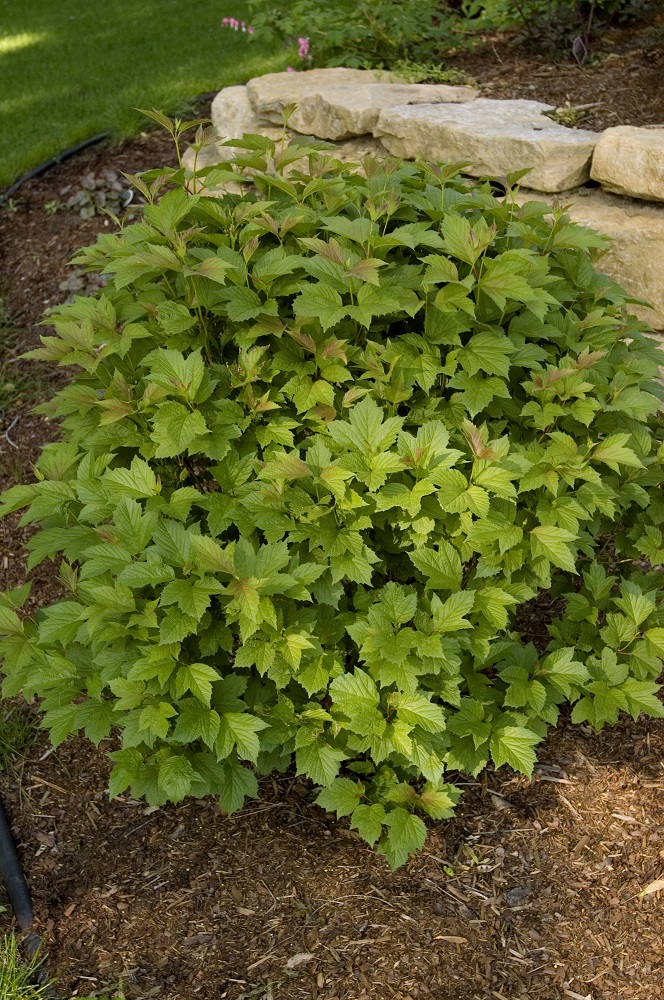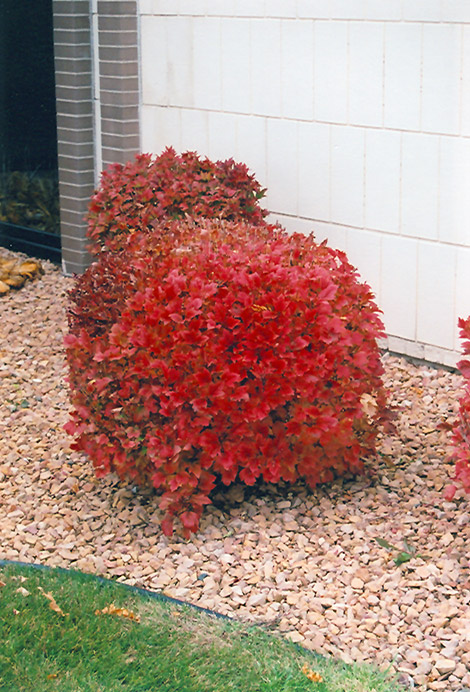>> Home
Bailey Compact Highbush Cranberry
Viburnum trilobum 'Bailey Compact'
Height: 6 feet
Spread: 6 feet
Sunlight:
![]()
![]()
![]()
Hardiness Zone: 2
Other Names: American Cranberrybush
Description:
A very attractive garden shrub with lush maple-like foliage that turns bright red in fall; rarely flowers or sets fruit; denser and more compact than the species, hardy and adaptable, makes a great natural low hedge
Ornamental Features
Bailey Compact Highbush Cranberry features showy white lacecap flowers held atop the branches in late spring. It features an abundance of magnificent scarlet berries from late summer to late winter. It has dark green deciduous foliage which emerges brick red in spring. The serrated lobed leaves turn an outstanding orange in the fall. The smooth gray bark and gold branches add an interesting dimension to the landscape.
Landscape Attributes
Bailey Compact Highbush Cranberry is a dense multi-stemmed deciduous shrub with a more or less rounded form. Its average texture blends into the landscape, but can be balanced by one or two finer or coarser trees or shrubs for an effective composition.
This is a relatively low maintenance shrub, and can be pruned at anytime. Deer don't particularly care for this plant and will usually leave it alone in favor of tastier treats. It has no significant negative characteristics.
Bailey Compact Highbush Cranberry is recommended for the following landscape applications;
- Mass Planting
- Hedges/Screening
- General Garden Use
Planting & Growing
Bailey Compact Highbush Cranberry will grow to be about 6 feet tall at maturity, with a spread of 6 feet. It tends to fill out right to the ground and therefore doesn't necessarily require facer plants in front, and is suitable for planting under power lines. It grows at a medium rate, and under ideal conditions can be expected to live for 40 years or more.
This shrub performs well in both full sun and full shade. It is quite adaptable, prefering to grow in average to wet conditions, and will even tolerate some standing water. It is not particular as to soil type or pH. It is highly tolerant of urban pollution and will even thrive in inner city environments. This is a selection of a native North American species.


